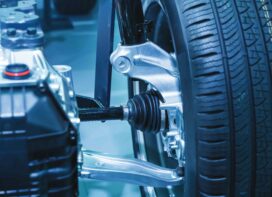
As the number of electric vehicles on Indian roads increases, a surge in discarded lithium-ion batteries (LIBs) is expected, underscoring the urgent need for a robust recycling ecosystem. Mitradev Sahoo (Junior Program Associate, Electric Mobility, WRI India) and Dr. Parveen Kumar (Senior Program Manager, Electric Mobility, WRI India) look at the economic feasibility of a large-scale recycling unit helping the case for the development of a circular economy.
Under its G20 Presidency, India has launched the Resource Efficiency and Circular Economy Industry Coalition (RECEIC) for global sustainable environmental impact. To further promote research commercialization and the adoption of a circular economy for battery waste, the Ministry of Electronics and Information Technology had transferred cost-effective Li-ion battery recycling technology to nine recycling industries and start-ups as part of Mission LiFE’s ‘Promote Circularity Campaign’.
Lithium-ion batteries (LIBs) completing their life in electric vehicle (EV) applications can be repurposed to utilize their remaining capacity in second-life applications, after which they reach their end of life and become a major source of e-waste.
Driven by rising demand for EVs, the LIB global market demand is expected to reach 2.8 TWh by 2030. As a result, the demand for critical materials is expected to increase, with the demand for lithium expected to increase by 5.3 times and cobalt by 5.2 times from the 2020 levels by 2030. This surge could potentially create a supply shortage of 21% for lithium and 18% for cobalt.
Recycling end-of-life LIBs can help address this material scarcity by reducing dependence on lithium mining by 25%, and cobalt by 35%. It would also ensure the local availability of recycled critical materials.
In India, the LIB recycling industry is currently dominated by retired batteries from portable electronic products. But in the future, LIBs from EVs are expected to dominate the recycling market which will require large-scale recycling units. Currently, hydrometallurgy and pyrometallurgy are the most widely used recycling technologies, while direct recycling is an emerging technology. The heterogeneity in battery cathode chemistries such as NMC (Nickel-Manganese-Cobalt), NCA (Nickel-Cobalt-Aluminum), LFP (Lithium-Iron-Phosphate) and LMO (Lithium-Manganese Oxide) complicate the development of feasible recycling business models with any given recycling technology. Understanding the factors that influence the financial feasibility of recycling units can help identify the necessary steps for enabling a sustainable recycling ecosystem in India.
To ensure financial feasibility, it is important to achieve low operational costs with possible automation, domestic recycling with lower transportation costs, and adoption of suitable recycling technology
 TrafficInfraTech Magazine Linking People Places & Progress
TrafficInfraTech Magazine Linking People Places & Progress


